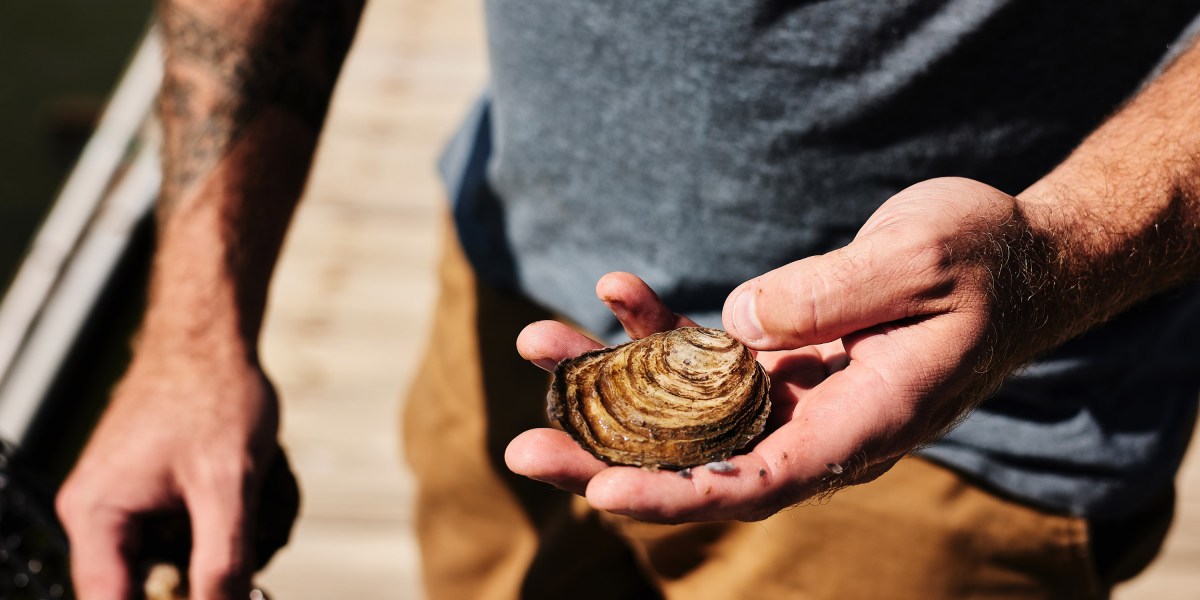Oyster fight: The humble sea creature could hold the key to restoring coastal waters. Developers hate it.

Oyster reefs, which are clusters of wild oysters that grow on top of and around each other, can protect shorelines from coastal erosion, acting as a living natural barrier. Both reefs and farmed oysters, which are grown in cages instead of on reefs, attract small organisms that make up the basis of many aquatic ecosystems. Those shellfish and other invertebrates become food for larger fish and crustaceans, which consequently gravitate toward the oysters as well. The oysters become the keystone species for a thriving ecosystem. Then the farmed oysters, once harvested, exit the water with the nutrient pollution safely stored in their shells. While some of those shells will end up in landfills, many restaurants participate in recycling programs that dry them and turn them into a hard surface to build more reefs, so they go back into the water as a home for wild oysters.
“When you look at a really pragmatic view of humanity’s intercession into the environment, it’s generally not positive. But when you look at this instance, there’s these actual ecosystem services that these artificial oyster habitats are rendering,” Hale says.
So where are all the oysters? If they are so powerful at cleaning the water, why is eutrophication a problem in the first place? This answer is sometimes site-specific—hurricane damage and too little salt in the water in Alabama, for example—but for most places, including the Inland Bays, the answer is mostly human overconsumption.
“Harvested oysters were foundational to our early colonial development in the US. And so it’s been this period of overharvest and overextraction,” Hale says. “At one point, they were pulling 2 million bushels per year out of the Delaware Bay alone to feed city communities in Philadelphia, Wilmington, and New York. They had oyster carts the same way we have hot dog carts.” While Indigenous groups relied on oysters as well, the colonists treated the ocean like an all-you-can-eat buffet, decimating wild oyster populations and leaving them vulnerable to diseases. They became too weak to survive in the eutrophying water.
By 1979 in Delaware, overharvest and parasites had almost wiped out the population. The reefs had been dredged so thoroughly they could no longer sustain themselves. The state, also facing conflict between clammers and the oyster industry, simply banned oyster harvest—and aquaculture—in the Bays. And for the next 30 years, the industry was dead.
In Sussex county, the largest county in one of the smallest US states, farm life flourished as the ocean life on its edges disappeared. Fields of corn and soy sprouted thick across its nearly 2,000 square miles. Today, cornstalks still stretch to the horizon along long stretches of the roads that wind to the beaches.
Though the county was home to a whaling colony in the 17th century, its biggest claim to fame today is its status as the birthplace of the modern broiler chicken industry, launched in the 1920s. As chicken demand grew over the course of the 20th century, so did the need for corn and soy to feed the poultry. The feed had to be cheap, which encouraged steady application of new synthetic fertilizers containing nitrogen and phosphorus, as well as new insecticides and fungicides. Yields for chicken farmers increased accordingly. In 2022, almost exactly one century after the modern poultry industry’s inception, Delaware farmers raised 596 million chickens. The manure from all those chickens also contained more of those problem nutrients.




